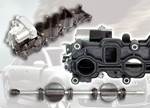Quick Changeover: The 3-to-7-Minute Color Change
Step 1: Assessment—These questions must be asked during the development of fast changeover procedures.
In lean manufacturing, changeover times are a vital component of shop performance. Minimal down time assures that multiple changeovers have little effect on a plant’s available machine time. After all, less down time in the production equation means more opportunities to take on more work and increase company profits.
This article outlines specific approaches towards color changes that will support the potential of completing color changeovers in 3 to 7 minutes. This may seem impossible, but with the proper planning, methods and equipment, speedy changeovers are an attainable and repeatable goal.
Step 1: Assessment
First of all, it is important to point out that this method applies to a specific set of circumstances. Many color changeovers can be optimized for maximum efficiency, but there are conditions that must be met before these techniques can be applied in the ways described. Here is a list of questions that must be asked during the development of fast changeover procedures:
Does the mold being used have a hot runner system? Hot runner molds do not completely adapt into the quick change-over system described, but with some modification to the procedures the change-over times can be reduced dramatically. The primary drawback is that not only do the screw and barrel require purging, the hot runner manifold itself must also be converted over to the new color.
Does the material being used require drying time? If so, what is the throughput used per hour? The methods described in this article cover the use of dried material, but part size and material throughput could affect timing and equipment needed for fast changeover.
Is a grinder being used? Grinder cleaning can add significant time to changeover without proper planning. One way to remove the grinder from the changeover equation is to remove the grinder for cleaning, then collecting the new runners for the new color to be ground after the cleaning is complete. Another method is to have spare grinders available. This allows for grinders to be switched out by cleaning the replacement grinder prior to the changeover.
Is the process being worked with stable? The primary goal of a process engineer is to develop a process that offers stability with any color. Stability is defined as a process that can be used to mold most if not all colors with minimal scrap and only small adjustments if any.
Next Week—Part II: Preparation & Equipment
ABOUT THE AUTHOR: Garrett MacKenzie is the owner and editor of www.plastic411.com. MacKenzie has held engineering/management positions for 16 years, and his plastics career spans more than three decades. He currently provides training in plastics injection molding. His next training event is a Scientific Molding Work Shop, to be held in Dalton, GA from March 24-25, 2018. For more information about the event, visit the plastic411.com website. He can also be reached at: training@plastic411.com.
Related Content
-
Injection Molder Changes Up Color Changes
An injection molder of trash cans, pallets, totes and other plus-size components, Rehrig Pacific’s machine fleet is composed of larger tonnage presses whose size makes material changes at the feed throat a potentially dizzying exercise.
-
Tosaf’s Investments in North America Result in 40% Increase in Production Capacity
Backed by a global presence, Tosaf provides localized additive and color solutions, and services for the plastic industry in North America.
-
Techmer Buys Advanced Color Technologies
Deal will expand Techmer’s in colorants and additives in synthetic fibers.














